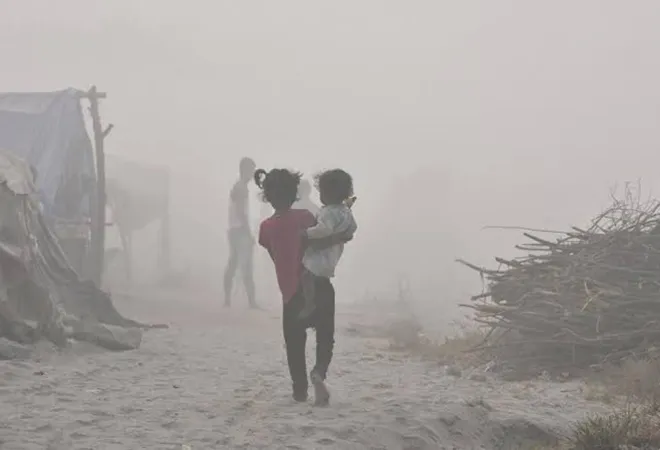CSTEP study identifies Sonai gaon as an emission hotspot due to the presence of cement plants
GUWAHATI, Aug 26: As the emission level of Byrnihat is expected to rise by 32 per cent by 2030, the Centre for Science Technology and Policy (CSTEP) has suggested implementing highly prioritized control measures to reduce emissions by up to 34 per cent.
While highlighting the severity of the situation, the CSTEP estimated an amount of Rs 74 crore for the measures to be taken in the city to reduce the pollution level.
The study by the CSTEP underscored the importance of targeted interventions to reduce emissions in Byrnihat. The CSTEP suggested several key strategies, including incentivizing industries to shift to clean fuel and advanced technologies, ensuring the installation of pollution control devices and enforcing pollution norms for vehicles operating inside industrial premises.
Under the National Clean Air Programme (NCAP), the Ministry of Environment and Forest and Climate Change (MoEFCC) has targeted achieving 20 per cent to 30 per cent reduction in concentrations of PM10 (particulate matter of diameter between 10 and 2.5 micrometres) and PM2.
“The city would need to spend around Rs 74 crore to implement the prioritised control options, while industries are expected to bear the cost of installation of pollution control devices and upgrading technologies. Using these combined interventions, the city could reduce the total PM2.5 emissions load to 108 tonnes/year in 2030, a 34 per cent reduction from the business-as-usual scenario,” the study of the CSTEP said.
Byrnihat is home to several industries, including cement, chemical, engineering, iron and steel among others. These industries serve as the primary sources of emissions in the city, with no other significant emitting sources identified.
“The measures such as incentivizing industries to switch to clean fuel, adopting advanced technologies, enforcing industry-specific pollution control devices, and ensuring all vehicles used in industrial premises are properly maintained and have a valid PUC certificate are crucial,” the study also said.
“Considering the industries present in the region, the city is expected to grow at a rapid pace. Given this growth, the city municipality should start implementing measures such as introducing public transportation and setting up infrastructure to ensure easy access to LPG in the upcoming years,” the CSTEP added.
During the study, the CSTEP also considered sectoral growth rates, population growth, and state-level policies to create projections for PM2.5 emissions under a BAU scenario. Emissions under the BAU scenario are expected to increase, as no air pollution control interventions are considered.
The total PM2.5 emissions are expected to rise by 32 per cent, reaching 163.3 tonnes/year in 2030, compared to 2019 levels. Around 75 per cent of the emissions could be attributed to industrial emissions, followed by transportation and road dust contributing 18.4 per cent and 6.7 per cent respectively,” it added.
The study has identified Sonai gaon areas as an emission hotspot where Purbanchal cement (OPC cement manufacturer) plant, SBM cement plant and brick kilns are established beside the Umtru river .
Within the city, PM2.5 and NOX emission hotspots were attributed to industries and transportation sectors and were located in the 13th and 14th mile industrial areas and along major highway AH2, whereas SO2 emission hotspots were located in the Sonai and Umtru dam industrial areas. Figure 6, Figure 7, and Figure 8 illustrate the spatial distribution of PM2.5, SO2, and NOX emissions across the airshed, revealing a significant contrast in emission intensity between the city and its immediate surroundings. For PM2.5, the annual emission intensity within the city ranged from less than 0.11 tonnes/km2 to 29 tonnes/km2. However, immediately outside the city’s boundary, in the Sonai and Umtru dam areas, the emission intensity was significantly higher, owing to the presence of the Maithan alloys, chemical plants and cement industries.
Specifically, these areas had emission intensities ranging between 29 tonnes/km2 to 70 tonnes/km2. Similarly, within the city, the annual emission intensity varied between <0.005 tonnes/km2 and 13 tonnes/km2 for SO2 and <0.002 tonnes/km2 and 21 tonnes/km2 for NOX. However, in the immediate surroundings (Sonai and Byrnihat industrial estate), it ranged between 137 tonnes/km2 and 1783 tonnes/km2 for SO2 and between 21 tonnes/km2 and 60 tonnes/km2 for NOX. To provide a comprehensive understanding of the sources of air pollution in Byrnihat.




